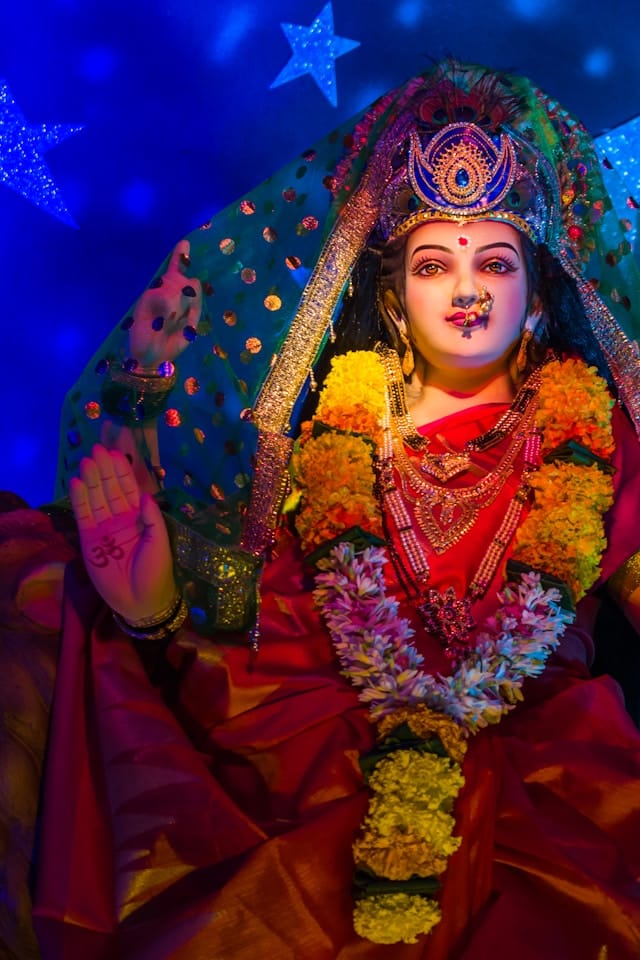The Science and Spirituality behind Navratri
God makes each mother capable of manifesting divine qualities in herself, as an embodiment of the Devi in a minuscule way. Rudyard Kipling said, “God could not be everywhere, and therefore He made mothers.”

The Hindu New Year, Nav Samvatsara, Vikram Samvat 2081, dawns on 9th April, 2024. It is the first day of the Chaitra Navratri festival.
There something about Navaratri that brings peace and piety into the house. Sowing Jau seeds to grow ‘Khetri’ on the first day of Navratri feels like sowing all things good and positive and seeking the blessings of the Divine mother.
The Hindu New Year is known and celebrated, across all states in our country. In Assam it’s called Bihu. In Punjab- Baisakhi. In Odisha- Pana Sankranti. In Kashmir- Nav Reh. In Sindh- Cheti Chand. In Andhra Pradesh and Karnataka- Yugadi. In Maharashtra- Gudi Parva.
Placed at the confluence of winter and summer, the Chaitra Navratri is when the body needs to prepare for the upcoming summer. This is the time we need to de-tox and boost our immune system. What better way to detox than to go off the grains that we eat in routine? That’s why Navratri food excludes wheat, rice, garlic, onion, heavy foodstuffs and non-vegetarian food. Navratri food includes fruits, nuts, milk, curd and alternate grains like swank ke chawal, Kuttu ka aata, amaranth etc. Navratri food is cooked in sehnda namak (rock salt) which is a great De-tox agent, being rich in Potassium. This is very scientific.
Ideally one should eat one meal a day in Navratri. At all other times, fruits and milk/curds should suffice. While fasting, it is better to really fast and not feast. A fast is observed to keep the body light so that there is time and energy for prayers and singing the glory of the Devi. Fasting means control or restraint, both on a physical as well as mental level. Prayer and meditation are for spiritual de-tox.
In Navratri we worship the Devi in the form of Durga, Lakshmi and Saraswati. Durga is Shakti Swaroopini, or pure energy. She confers on us physical, mental and spiritual powers. Lakshmi bestows on us wealth and prosperity. Saraswati gives knowledge, wisdom and discrimination.
Sati, the first wife of Shiva jumped into the holy fire and was burnt to ashes. After Sati immolated herself, Shiva in agony, carried her corpse and performed the Tandava Nritya. Lord Vishnu used his Sudarshan Chakra to disintegrate the burnt body of Sati. The charred parts of her body and jewels flew and fell, far and wide in different directions. Wherever they fell, a divine and potent energy emanated. There are 51 such places that are known as Shaktipeeth. Sati later re-incarnated as Parvati and Shiva married her.
In Navratri, we may do any Devi Paath like Durga Saptshati, Gauri Poojan, Durga Chalisa, Mahishasura Mardini Stotra etc. In addition, we must offer gratitude to the five mothers that nurture us. They are Bhu Mata (Mother Earth), Veda Mata (Vedas), Desh Mata (Mother India), Gau Mata (Cow) and last but not the least, Deha Mata (physical mother).
God makes each mother capable of manifesting divine qualities in herself, as an embodiment of the Devi in a minuscule way. Rudyard Kipling said, “God could not be everywhere, and therefore He made mothers.” The Navaratri festival reminds us to respect our mother and appreciate the sacrifices made by her in giving birth and raising us. It is not enough to offer flowers and worship to Durga, Lakshmi and Saraswathi, ignoring our physical mother.
Bhartiya festivals have been designed to remind us periodically, to connect with divinity in whatever form appeals to us. It is important to understand their inner meaning and underlying objectives.
The last day of the Chaitra Navratri is Ram Navami. It celebrates the birth of Bhagwan Ram. This year it seems Ram Navami shall be special because there shall be unprecedented celebrations in Ayodhya. Now that Ram Lalla is viraajmaan (present) in Ayodhya, it certainly calls for a divine birthday party! Jai Mata ki! Jai Shri Ram!
This article has been published in the Hindustan Times on April 7th, 2024. It can be viewed here https://www.hindustantimes.com/cities/chandigarh-news/sunrays-the-science-spirituality-behind-navratri-101712456125830.html
Feed back welcome!




Comments ()